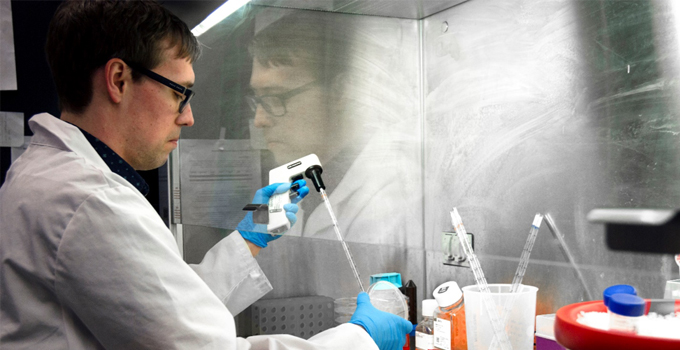Collaborative research group identifies new cancer-driving mechanisms in brain cancer stem cells, describes novel ways to overcome the limited effectiveness of standard therapy

Glioblastoma is the most common and the most deadly type of brain cancer found in adults, yet there have been no new advances in treating this disease for almost two decades. Recent research has provided a wealth of knowledge about the genomics – or the abnormal genetic code – of glioblastoma, but this has yet to translate into new treatments for patients. Understanding which genes drive glioblastoma can help uncover new ways to treat this incurable disease, and a pan-Canadian research group has set out to do just that.
Researchers from the University of Toronto, The Hospital for Sick Children and the University of Calgary have teamed up to identify genetic vulnerabilities in brain cancer stem cells – the cells that often resist treatment and cause the disease to return in patients after treatment. Their recent findings, which were published today in Cell Reports, uncovered new targets for glioblastoma and unraveled some of the complex mechanisms behind the disease.

“We set out to understand which genes are important functionally,” says Dr. Graham MacLeod, co-primary author of the study and Research Associate in the lab of Dr. Stéphane Angers at the University of Toronto. “Connecting a gene to its function is a bit like connecting circuits on a very complex circuit board. If we can understand which genes are important, then we can find hints into where to unplug, plug in, stop and start mechanisms so that we can potentially stop the progression of the disease.”
The group used CRISPR-Cas9 gene editing tools, which Angers and MacLeod specialize in, to investigate all 20,000 genes within the genome and identify the key genes that are required for glioblastoma cells to survive and grow. In their study, they identified one gene in particular whose function is already targeted in leukemia treatments. Angers says this is promising “because it uncovered a biological process, not previously suspected to be implicated in glioblastoma, for which a small molecule drug already exists.”
As part of OICR’s Brain Cancer Translational Research Initiative, the next stage of their research will use the same gene editing approach to investigate tumour cells after therapy to find the genes or the genomic changes that help tumour cells evade treatment and recur in patients.
Read more about this research on University of Toronto News or learn more about the Stand Up To Cancer Canada Cancer Stem Cell Dream Team.
